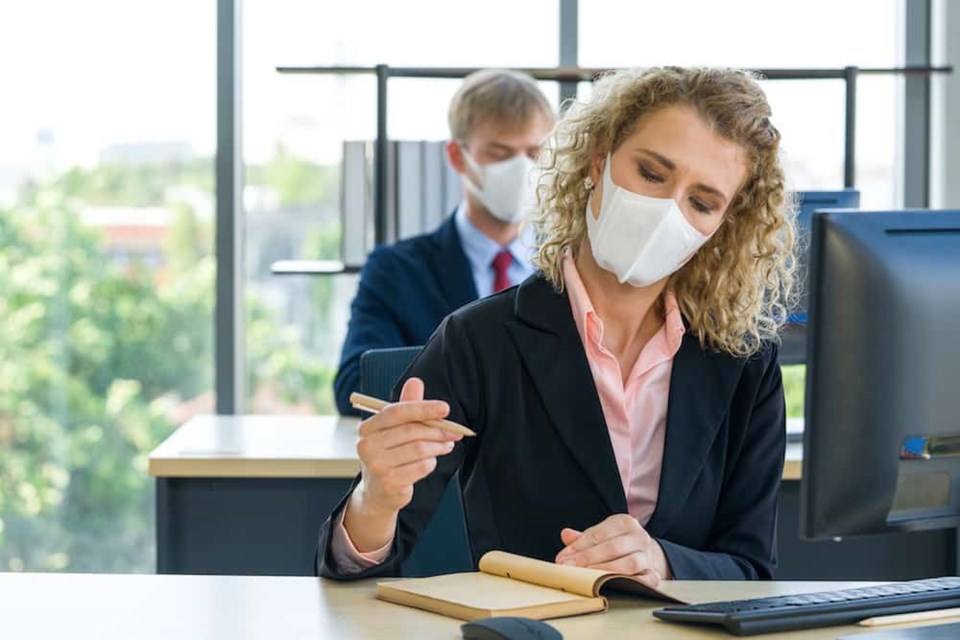Many people have been lucky enough to A) keep their jobs during the COVID-19 pandemic and B) work from home in a safe environment.
I’m one of those lucky ones. Many of my friends have not been so lucky. They have jobs that require them to be out in public, risking getting COVID-19.
They are the ones I really feel for.
Having said that, there are other people who are working from home who now have to face the idea of returning to the office now that vaccinations are ramping up and many restrictions are lifting.
And they feel anxious about the whole thing, even if they will be able to receive their second dose before that happens. Being fully vaccinated does make you 100% protected so precautions will still be needed.
Personally, I will still be wearing a mask out in public for a long time, including when I’m in the office.
So, if you are feeling anxious, what do you do about it?
Well, being informed is one important step. Peninsula Canada, an HR and health and safety consultancy, emailed some information to help you get informed about life back at the office.
Here’s what they recommend:
“Supporting returning workers’ mental health
Employers are advised to be empathetic and supportive to workers who find this transition difficult. Many have gotten used to working remotely or being on a layoff, their circumstances at home may have changed or they don’t feel comfortable returning to the physical workplace during the pandemic.
Employers can support workers’ mental health by directing them to Employee Assistance Programs, government resources or to seek professional help. Employers can also reduce workers’ stress and anxiety by communicating clearly about what measures are in place to protect them at work and why their return is necessary after the lockdown.
Preparing workers for their return
To give workers a chance to prepare for their return, employers should notify them of reopening plans in advance. Return to work policies can also be used to lay down expectations for staff, such as reminding them of appropriate conduct in the workplace and about how to correctly follow health and safety rules. Employers should be transparent in their communications with staff and explain what the next steps are for their organization. Knowing changes that are happening in the workplace can help workers understand why the return to the workplace is necessary and help them feel more comfortable.
Maintaining health and safety practices
Workers should be reminded that while some may already be vaccinated, health and safety measures must still be followed at work. This is important for the protection of workers, visitors and their families. It is not yet known whether vaccines prevent the spread of COVID-19 and how long protection from vaccines last. For these reasons, workers who have been vaccinated must also continue to follow government guidelines at work. This can help ease workers’ anxieties about safety when they return.
Employers’ obligations and workers’ rights regarding vaccination
Some workers may be unable to get the vaccine and be worried about how this will affect their employment. Employers cannot force workers to get vaccinated.
Employers also cannot ask for workers’ medical records as proof of vaccination under privacy laws.
Preventing vaccine stigma in the workplace
To help ease concerns, employers can educate workers on their rights and what obligations the employer has to them. If an employee cannot get vaccinated, employers should work with them to find an arrangement that will allow them to continue working safely. Employers should also highlight that workers should not be asking each other about decisions relating to vaccination as this can be a sensitive topic that can touch personal and health issues. Instead, workers should be encouraged to voice any related concerns to management. Workers should also be reminded to maintain professionalism at work and to follow policies on appropriate workplace conduct and harassment. Communicating this to workers before their return can make them feel confident that they will have their employer’s support and reduce anxiety.”



